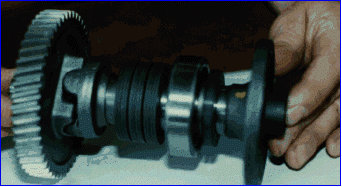
Lorem Ipsum is simply dummy text of the printing and typesetting industry. Lorem Ipsum has been the industry's standard dummy text
ever since the 1500s, when an unknown printer took a galley of type and
scrambled it to make a type specimen book. It has survived not only five
centuries, but also the leap into electronic typesetting, remaining essentially
unchanged.


Troubleshooting the Beaver family of ultralight aircraft - ADS electric start




UltralightNews.com

Lorem Ipsum is simply dummy text of the printing and typesetting industry. Lorem Ipsum has been the industry's standard dummy text
ever since the 1500s, when an unknown printer took a galley of type and scrambled it to make a type specimen book. It has survived
not only five centuries, but also the leap into electronic typesetting, remaining essentially unchanged.


Beaver, Beaver ultralight aircraft, Beaver RX 35 ultralight
aircraft, Beaver RX 550 ultralight trainer troubleshooting report.
In 1987 Spectrum aircraft manufacturers of the Beaver sent a notice out relating to electric starters supplied by ADS. Apparently the
starters were incompatible with some models of Rotax engines. The starters were apparently were misaligned between the starter
and crankshaft flywheel which apparently caused "catastrophic engine failure without warning." If you are using an ADS starter (no
longer in production) it is suggested this be area of regular inspection.
Troubleshooting the Beaver family of ultralight aircraft - Rotax reduction drive
The standard reduction drive supplied on the Beaver is a Rotax gear drive system. Beaver owners have reported failures of this drive, as well Rotax has updated the drive several times over the years. Failures and updates include: Failure of the bolts securing the drive to the engine. The drive system used on the Beaver is secured by either 3 or 4 bolts depending on the year of the aircraft. These bolts have been reported to come loose and or fail. It is suggested that when installing the bolts that BLUE LOCTITE be used on the threads of the bolts, and that these bolts be an area of regular inspection. Rotax has also updated the drive from a three bolt system to a four bolt on older engines, while newer CDI equipped engines have a 6 or 8 bolt retaining system. Failure of the drive gear. Numerous owners have reported failure of the large gear used in the Rotax A gear box. Early model drives had a gear that was full of holes. New gears are solid. Several owners have reported failure of the dog hub which is used to transfer the power from the gear to the output shaft. Rotax has updated this dog hub from a two fork system to a four fork system. The four fork system is also quite a bit beefier.
Failure of the Spring washers.
Many owners have reported problems with hard starting engines. Rotax traced this problem to weak spring washers located on the
output shaft below the dog hub. The solution to the problem was change from the old 8 washer system to the new 12 washer system.
Failure of the drive output shaft.
Several owners of older aircraft have reported failure of the aluminum hub found on the output shaft which the prop bolted onto.
Rotax updated both the output shaft and hub. New shafts have a steel flange which is part of the shaft rather than a separate unit.
Loss of gear oil from drive resulting in gear box failure.
Many Beaver owners have reported gear box failure. This failure was traced to lack of lubrication. It was found
that the pressure build up inside the gear box, along with the siphoning action of the propeller would suck the
oil out of the gear box.
Rotax found that an oil slinger, located on the end of the crankshaft, used to fling the oil around inside the
drive was causing to much pressure build up. Part of the solution was to remove this slinger. Rotax has also
updated the vent cap on the drive to help eliminate the siphoning action.
Failure of the bolts securing the prop onto the reduction drive.
A problem that has caused several fatalities on Beaver aircraft has been prop retaining bolt failure. To date all reports that I have
were using two blade wooden propellers. A solution was to switch to a GSC propeller. The GSC uses dowel pins in the larger holes
located on the drive. These fit into holes in the propeller hub and prevent stress being passed back onto the prop bolts.



